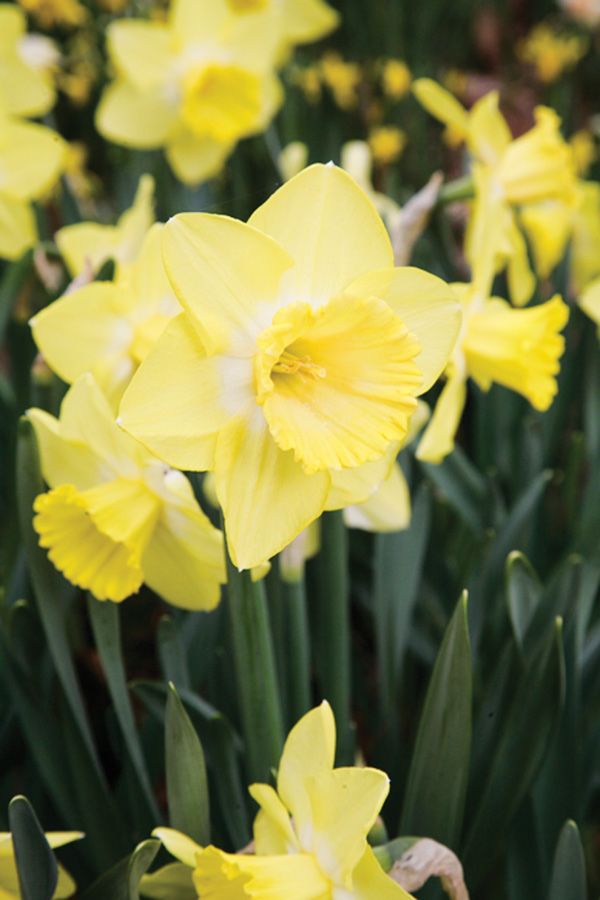If it’s spring, it’s daffodil time With planning, varieties can be staggered to bloom

By Lynn Hoffman
OSU Ext. master gardener volunteer
For many it’s the daffodil.
The bright, cheery yellow of the daffodil lights up the awakening garden in spring.
Daffodil is the common name for these plants that belong to the genus Narcissus.
Their attractive flowers usually bear showy yellow or white flowers with six petals and a trumpet-shape central corona.
They come in a range of other colors as well, from creamy whites, pinks, oranges, and even some green ones.
Some have multiple blooms on a stem and others have double, carnation-like blooms.
Why grow daffodils?
In addition to the pleasure of seeing these first flowers bloom in the garden, there are a number of reasons.
First, they’re among the easiest and most dependable of all flowers and ideal for the beginning gardener.
They are planted in the fall.
Just select a sunny, well-drained spot, and they’ll take care of themselves.
Once planted, they generally continue to grow and multiply, unlike many other bulbs that dwindle and die out.
With any luck you’ll be able to divide your bulbs in a few years and share them with friends.
There are over 25,000 registered cultivars, with more being hybridized every year.
So which daffodils do you chose?
While fall is the time to plant daffodils, spring is obviously the time to decide which cultivars you want to plant.
Start by looking at your neighbor’s garden.
What daffodils do they grow and recommend?
If you express interest, they may even be willing to share some bulbs when they divide them.
The American Daffodil Society’s web page, http://daffodilusa.org, is helpful in choosing daffodils.
There you will find a reference list of the best, easy-to-grow garden daffodils.
Known as the Wister Award daffodils, there are 35 varieties recommended for the beginner.
They have been evaluated for such things as vigor, long-lasting bloom, and ready availability.
You can’t go wrong with any of these.
In this area, you can see the many variations in daffodils in Mill Creek MetroParks and its Fellows Riverside Gardens in Youngstown.
The Gardens are recognized by the American Daffodil Society as one of the country’s premier botanical gardens that grow an extensive collection of daffodils.
The Gardens continue a tradition in Mill Creek Park that began with the Daffodil Meadow, where in the 1930s over 8,000 bulbs were planted.
There are now countless bulbs and over 200 species and cultivars in bloom, growing in garden beds.
Daffodil Meadow thrives today and is a popular attraction on the shore of Lake Newport at East Newport Drive.
It is at a peak for only a few weeks.
Call the gardens to check on the bloom time: 330-740-7116.
Even more varieties can be seen at the annual daffodil show.
This year, the show will be April 19-20.
With hundreds of daffodils on display, you can really get a snapshot of the many colors and variations to be found.
It’s also a good place to select potential varieties for your own garden, as those on exhibit have been grown by local enthusiasts.
In the fall, your local garden center will have varieties that are readily grown in your area.
As you select the daffodils, look for the bloom period on the package.
With a little planning you can select varieties to stagger the blooms over the course of six weeks.
For details on growing daffodils, see: http://go.osu.edu/daffodilquestions.
 43
43

